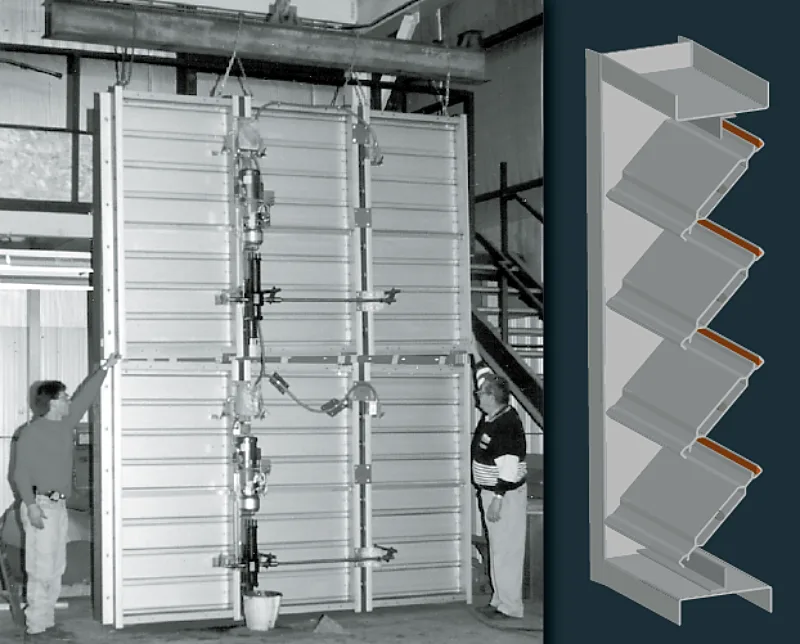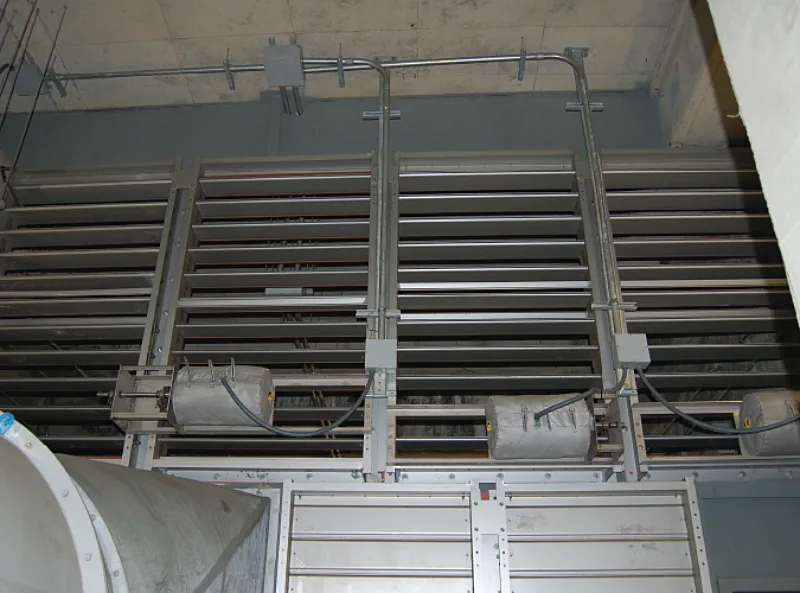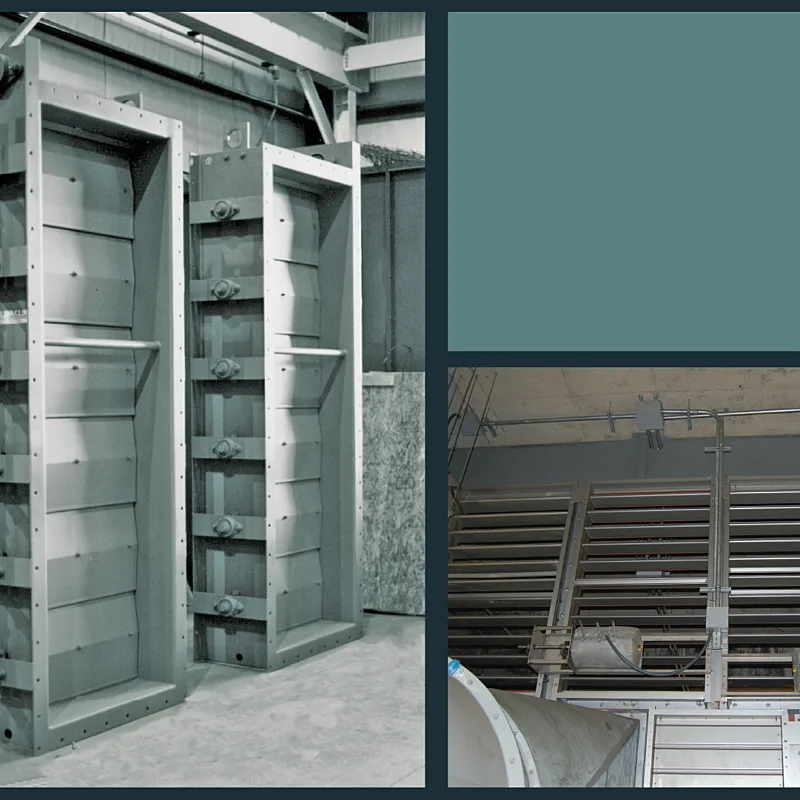Transit tunnels are the lifeline of major cities. Whether they carry traffic or trains, these tunnels need adequate ventilation so that commuters stay healthy as they travel. This is especially important in transit tunnels, where commuters will stand in line and wait for their train. These commuters need clean air, no matter where they are in the tunnel. Technicians also need adequate ventilation as they work to maintain the many transit systems behind the scenes.
HVAC systems in tunnels are built to keep air circulating through every part of the tunnel. This often requires heavy duty equipment. These systems use a special type of damper to regulate air flow.

What is a Tunnel Damper?
Tunnel dampers are volume control dampers that are built to withstand the intense conditions of tunnel air flow. They can be used for a variety of applications within a tunnel HVAC system, including air intake and exhaust. In this position, these dampers act like a standard control damper installed at a ventilation point. At an intake point, they open to allow air through the intake and close when the intake process is complete. For exhaust, the operation is the same: the damper opens to exhaust the air and closes when it’s done.

Tunnel dampers are built from galvanized and stainless steel, although they can also be made from thick gauge extruded aluminum. The damper must be able to withstand intense static pressures and high velocity airflow. For instance, AWV’s VC-51 is built to operate in air conditions with up to 60 in. w.g. of static pressure and air velocities up to 8000 feet per minute (FPM). To compare this with a standard control damper, our VC-28/29 can operate in air conditions with up to 4 in. w.g. of static pressure and 4000 FPM.
As you can see, tunnel dampers are built for extreme air conditions. Tunnel HVAC requires heavy duty dampers for these scenarios.
Tunnel Dampers and the Piston Effect
Transit tunnels have an additional aspect to consider. Trains will come and go through these tunnels, moving at incredible speeds, to get passengers to their next stop. Depending on the layout, trains may pass into the tunnel system from an outside station. High-speed trains, like those used in subways, can create gusts of air as they pass through the tunnel. This is called the piston effect. As the train passes through the tunnel, it creates positive air pressure at the front of the train and negative pressure towards the back of the train.

As the train moves, it pushes the air ahead of it while it pulls the air behind it. The ultimate result resembles a motor piston, except that the air coming in can pass through the opening at the other side of the tunnel. The piston effect has its benefits. Trains can create passive ventilation through the tunnel by pushing old air out of the area and bringing in air from outside. However, the air is delivered as a single massive gust. The air will also be unconditioned. Imagine waiting for the train on a muggy day, only to be blasted by muggy air as your train arrives. Commuters would have to bundle up in the winter if they planned to wait for their train. The incoming air will also contain fumes from the train, which will build up in the tunnels without proper ventilation.

You can help mitigate the piston effect by installing tunnel dampers at the entrance and exit points of the tunnel. The tunnel dampers will open as the train moves through the opening, relieving the air pressure as the train passes. Trains can produce massive amounts of air pressure as they pass, so each tunnel damper is built to withstand these intense conditions. These dampers can lead into the tunnel’s HVAC system, so that the air can be cleaned, conditioned, and distributed through the tunnel. Or, the dampers can lead to tunnel exhaust points, so that the air doesn’t mingle with the conditioned air from the system. Commuters still receive all the benefits of fresh air. They stay comfortable as they wait for their train, with tunnel dampers in place.
Other Uses for Tunnel Dampers
HVAC systems must be equipped with passive fire protection devices, like fire and smoke dampers, to help contain the flames and slow their spread into other areas. Tunnel dampers can be used for smoke control during a fire event, but they must meet several of the following standards to be used as a smoke control device:
- NFPA-130, Standard for Fixed Guideway Transit and Passenger Rail Systems
- NFPA-502, Standard on Subterranean Spaces
- UL 555S for Smoke Dampers
- BS 476 (UK) for Fire Tests
Additionally, the tunnel damper should be equipped with a smoke detector. Check out "Smoke Damper Vs Fire Damper: Understanding the Differences” for more information on smoke dampers and passive fire protection.
Tunnel dampers help ensure that commuters have fresh, conditioned air at the station. They ensure that tunnels are safe and comfortable places to work.

AWV and Tunnel Dampers
Starting a tunnel project? You need dampers built to withstand the rigors of the toughest environments. Consider adding tunnel dampers from American Warming and Ventilating (AWV). At AWV, we build our tunnel dampers to meet the demands of tunnel and subterranean applications. We can help you meet your tunnel airflow requirements, with dampers built for over 60 in. w.g. static pressure.
Need a tunnel damper for passive fire protection? Our TFD-75 exceeds the limits for BS 476 compliant construction and meets the standards of NFPA 130. Contact AWV today! Let us help you build the right dampers for your project.






